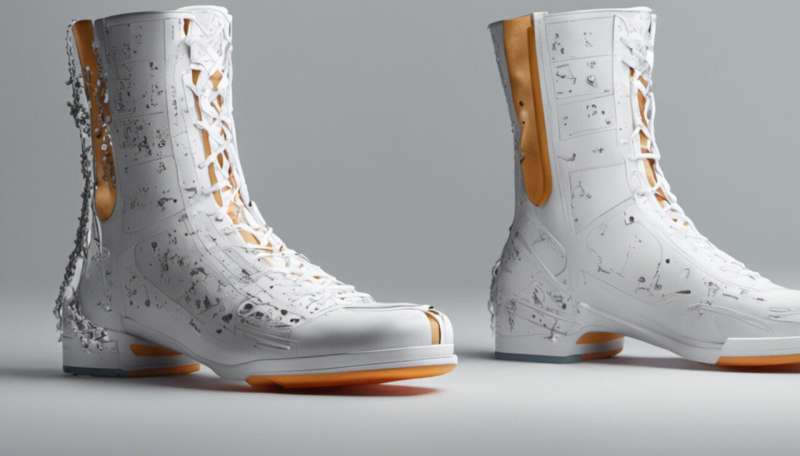Benefits of 'smart boot' for patients recovering from diabetes-related wounds

As part of its partnership with Center to Stream Healthcare in Place (C2SHIP), Keck Medicine of USC has developed a new, interactive smart boot to help diabetic patients recover from dangerous foot wounds. The work was conducted in a multiphase study funded by the National Institutes of Health.
Every second, someone with diabetes develops a dangerous foot wound. Patients with diabetic nerve damage can be less sensitive to pain, which means they don't always know if they're putting too much pressure on their foot—or for that matter, a healing wound. All too often, this leads to infection, hospitalization and even amputation.
Treating these patients requires a plan to offload pressure from the bottom of the foot. This is often done with specially made braces known as removable cast boots.
"The first phase of the boot project was just to protect the wound," explained David Armstrong, Ph.D., DPM, director of C2SHIP and professor of surgery at the Keck School of Medicine of USC. "If we can take off the pressure, we can heal the wound."
The boots worked, but the team had a problem: Patient compliance with wearing the boot was hovering at around 28%.
That led to phase two: a boot that patients couldn't remove. Patients healed more quickly, but it wasn't ideal.
"It felt like something we were doing to the patient rather than with the patient," said Armstrong, who also serves as co-director of USC's Limb Preservation Program.
In time, phase three emerged: a more sophisticated wearable.
Driven by cloud computing, the new model allows patients to put on or remove the boot whenever they wish. To further increase compliance, the boot gives feedback to the patient about their activity level and the amount of time they spend with the boot on. This "smart boot" also sends data directly to the care team.
"I may know the medical aspects, but I always have to be aware that patients know their own lives best," said Armstrong.
The study is now actively following patients for twelve weeks. Armstrong and his team have found that this model appears to be working: Early data suggests good compliance and the feedback may help patients stay actively engaged in their own recovery process. The results were published in the Journal of Diabetes Science and Technology in January, and the study is already a model for similar trials around the world.
More information: Catherine Park et al, Smart Offloading Boot System for Remote Patient Monitoring: Toward Adherence Reinforcement and Proper Physical Activity Prescription for Diabetic Foot Ulcer Patients, Journal of Diabetes Science and Technology (2022). DOI: 10.1177/19322968211070850





















